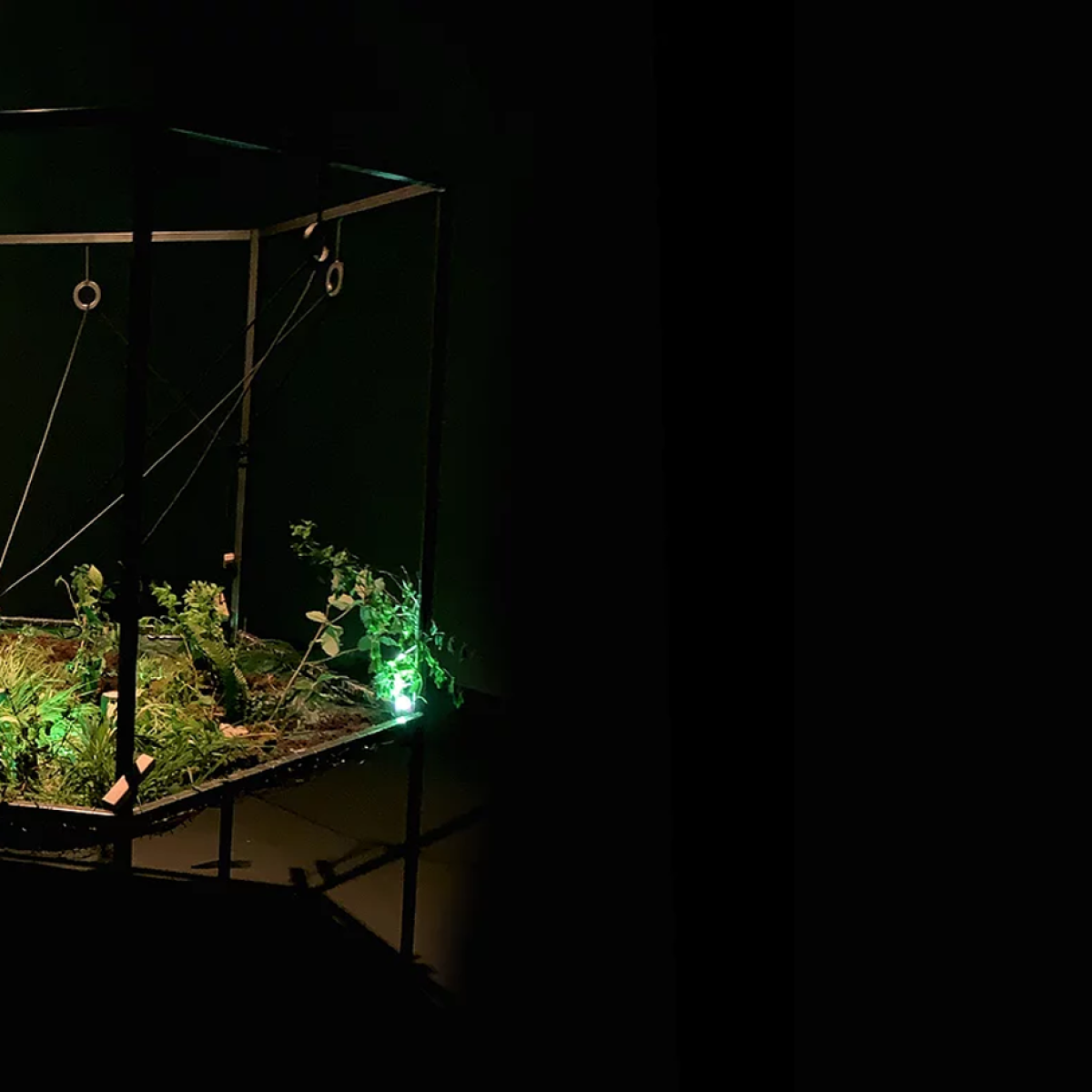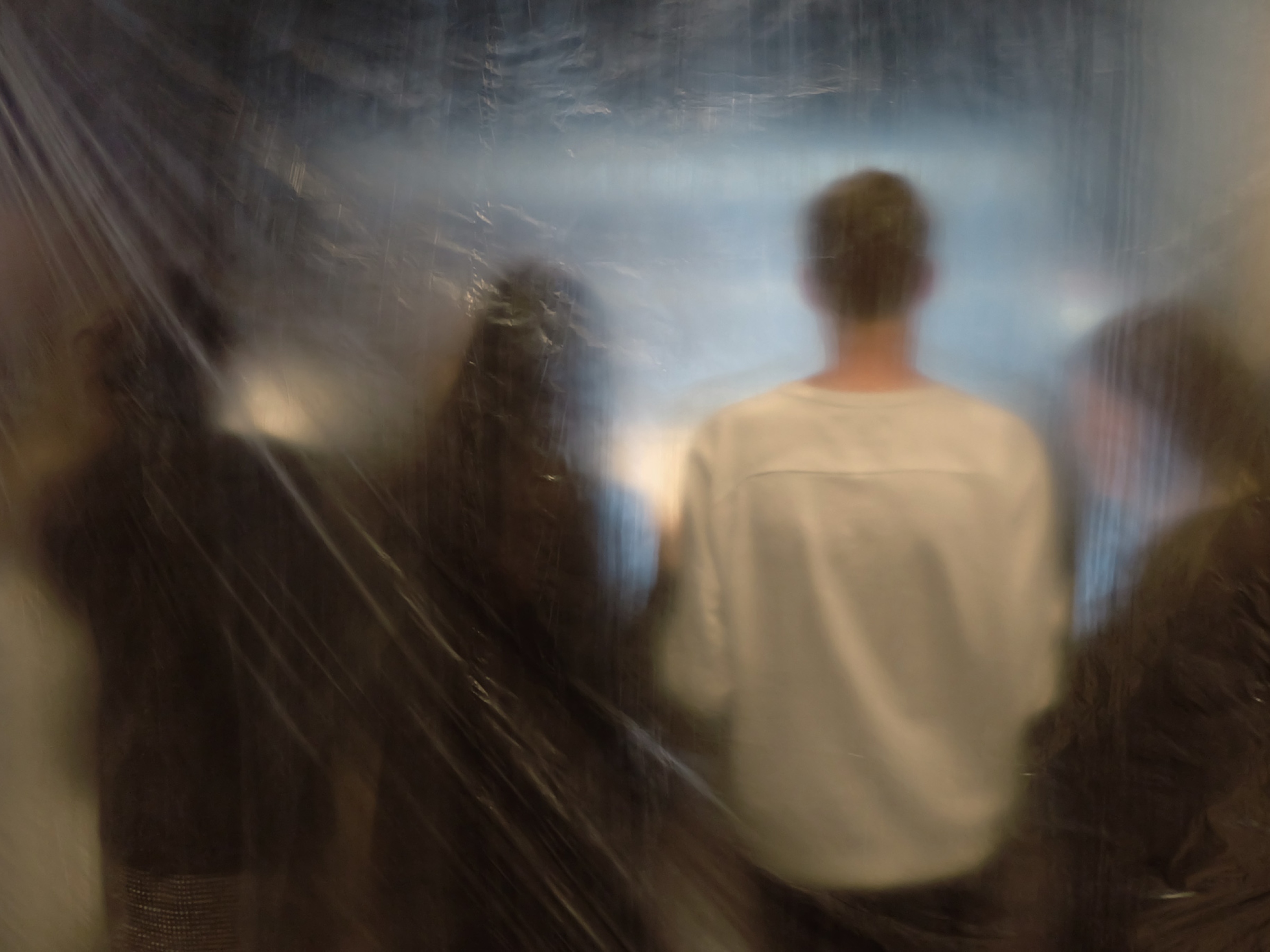
The Affluenza Center for Overconsumption
The Affluenza Center for Overconsumption is an interactive design exhibition that examines individual consumer behavior. Through research and observations, we have identified individual overconsumption as a significant influence to the climate crisis. Our research indicates that a large part of the Norwegian population continues to ignore climate issues due to a lack of personal responsibility.
To challenge this consumer attitude, our exhibition utilizes the human body as a vehicle for addressing overconsumption and its impacts on the environment. We declare overconsumption to be an epidemic. To cure the sickness, immediate action is required. You cannot leave your sick body, the same way there is no Planet B. By presenting this analogy, visitors must confront their personal responsibility for climate change.
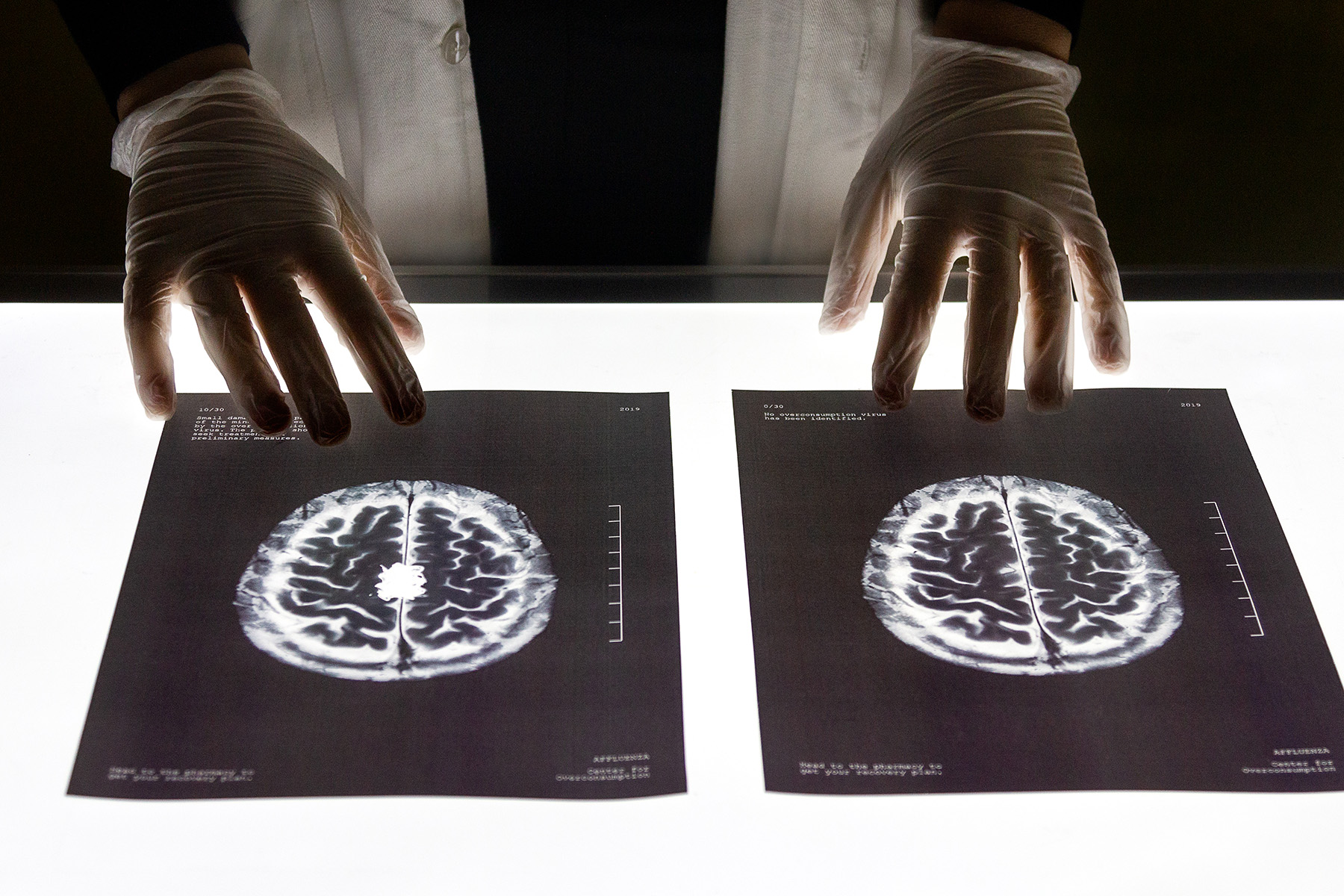
Target
The Affluenza Center for Overconsumption is an interactive design exhibition that examines individual consumer behavior. Through research and observations, we have identified individual overconsumption as a significant influence to the climate crisis. Our research indicates that a large part of the Norwegian population continues to ignore climate issues due to a lack of personal responsibility.
To challenge this consumer attitude, our exhibition tries to reach its participants on an emotional level by utilizing the human body as a vehicle for addressing overconsumption and its impacts on the environment. We declare overconsumption to be an epidemic. To cure the sickness, immediate action is required. You cannot leave your sick body, the same way there is no Planet B. By presenting this analogy, visitors must confront their personal responsibility for climate change.
To participate in an interdisciplinary design practice, our project integrated scientific data.
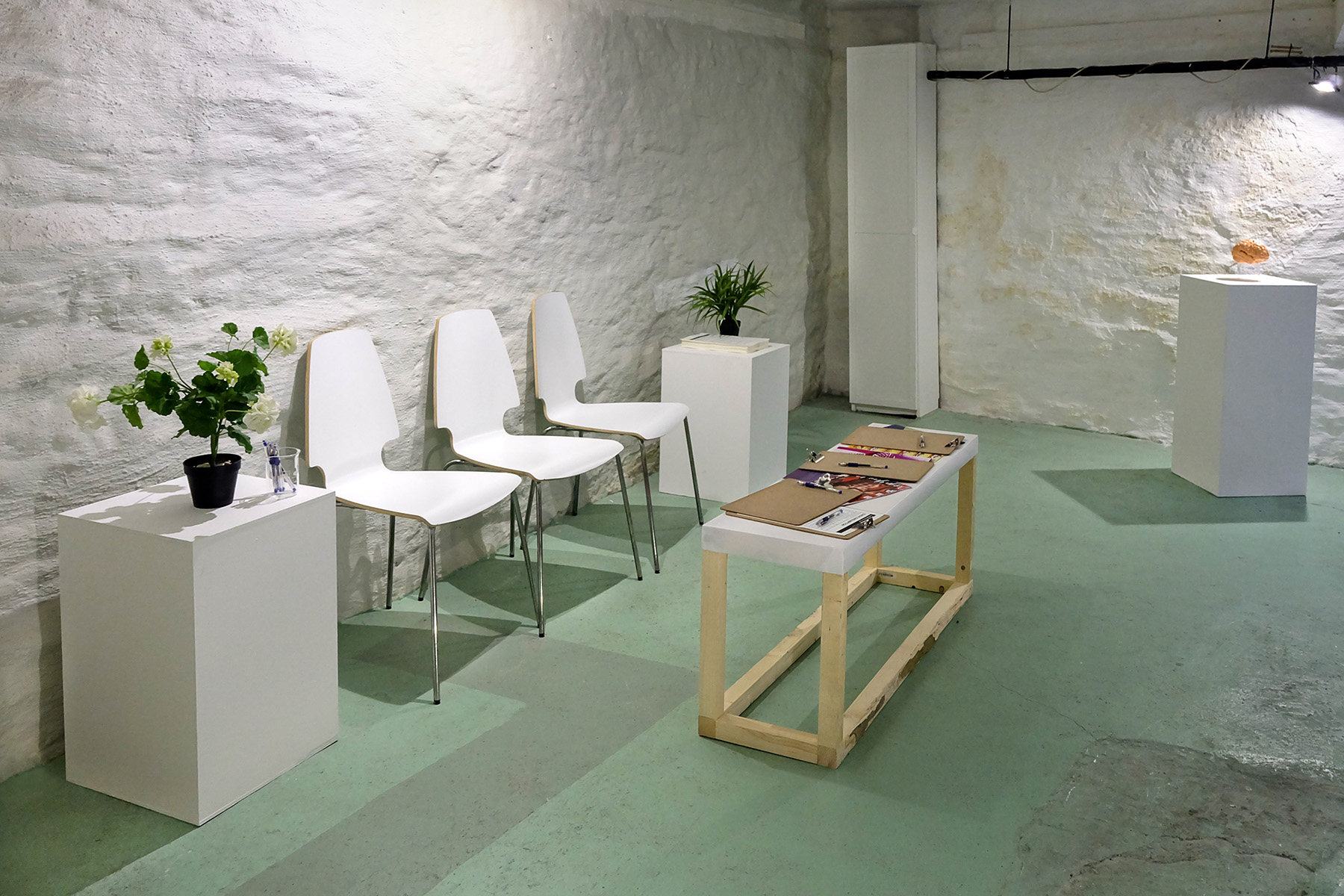
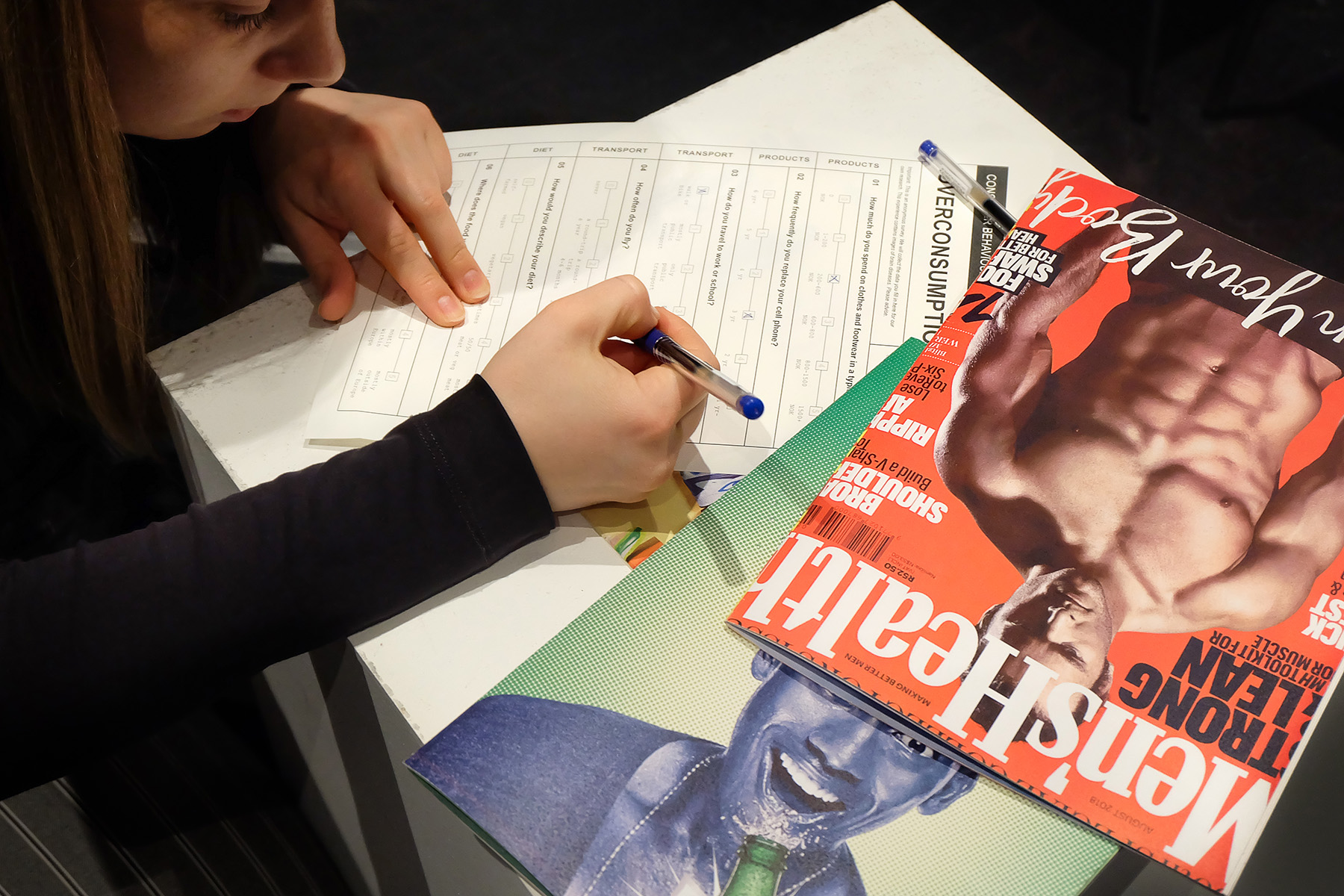
Process
The first step in our process was to identify overconsumption as one of the most significant factors to the climate crisis. Rather than focusing on the corporate level, we decided to focus on overconsumption on the individual level. It is here, we concluded that we can make an impact with our project.
Given all the information about the climate crisis that was already available to the public, we decided in a second step that the outcome of our project should be an interactive experience. Through this experience, the individual is confronted with her or his consumption habits and personal responsibility for the climate crisis, eliminating the possibility to ignore or escape the facts.
In order to make the experience as personal and consequential as possible, we decided to use an analogy to convey the message to the participants. We can not escape the planet just as we can not escape our body. Hence, we need to treat the planet just like we would treat ourselves when we are sick. That is why we declared overconsumption to be an epidemic.
In order to manifest this idea, we decided to create a doctors office which treats each individual’s consumption habits as a condition of the mind. The participants would take a test in the waiting room, be confronted with the result by a doctor, and receive an explanation as well as a treatment plan in the pharmacy. Each room was also designed to trigger specific emotions like anxiety, remorse and a motivation for change.
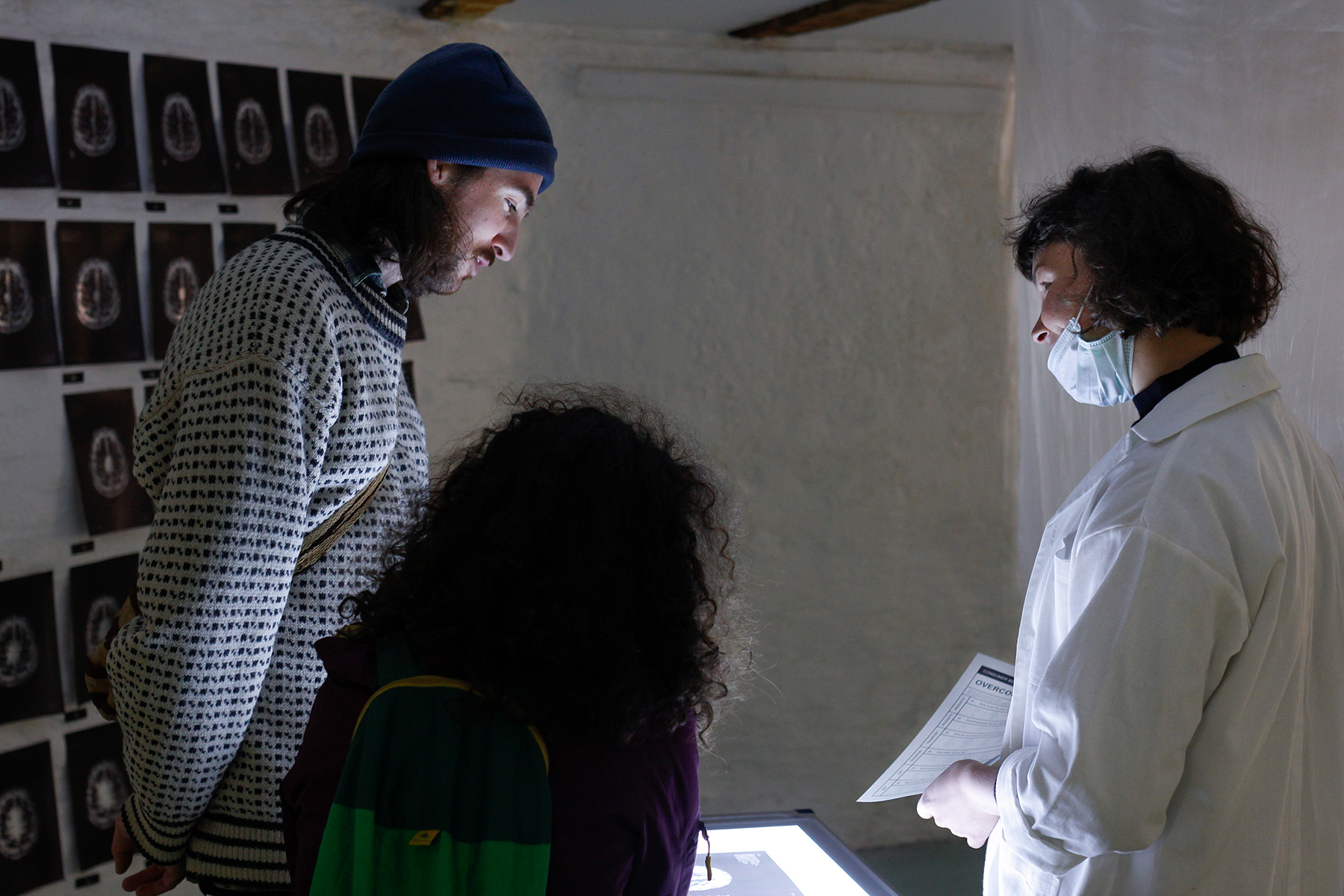
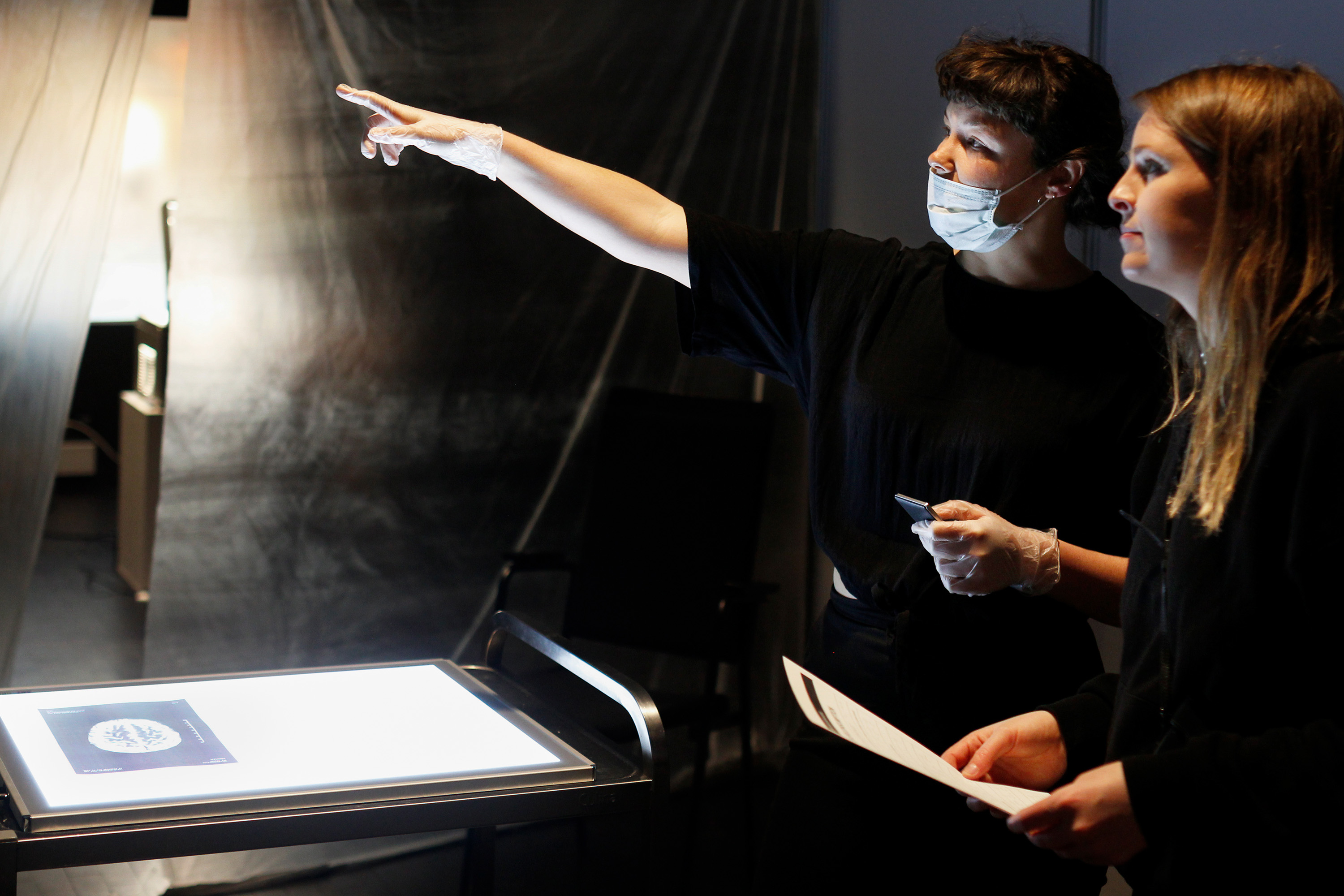
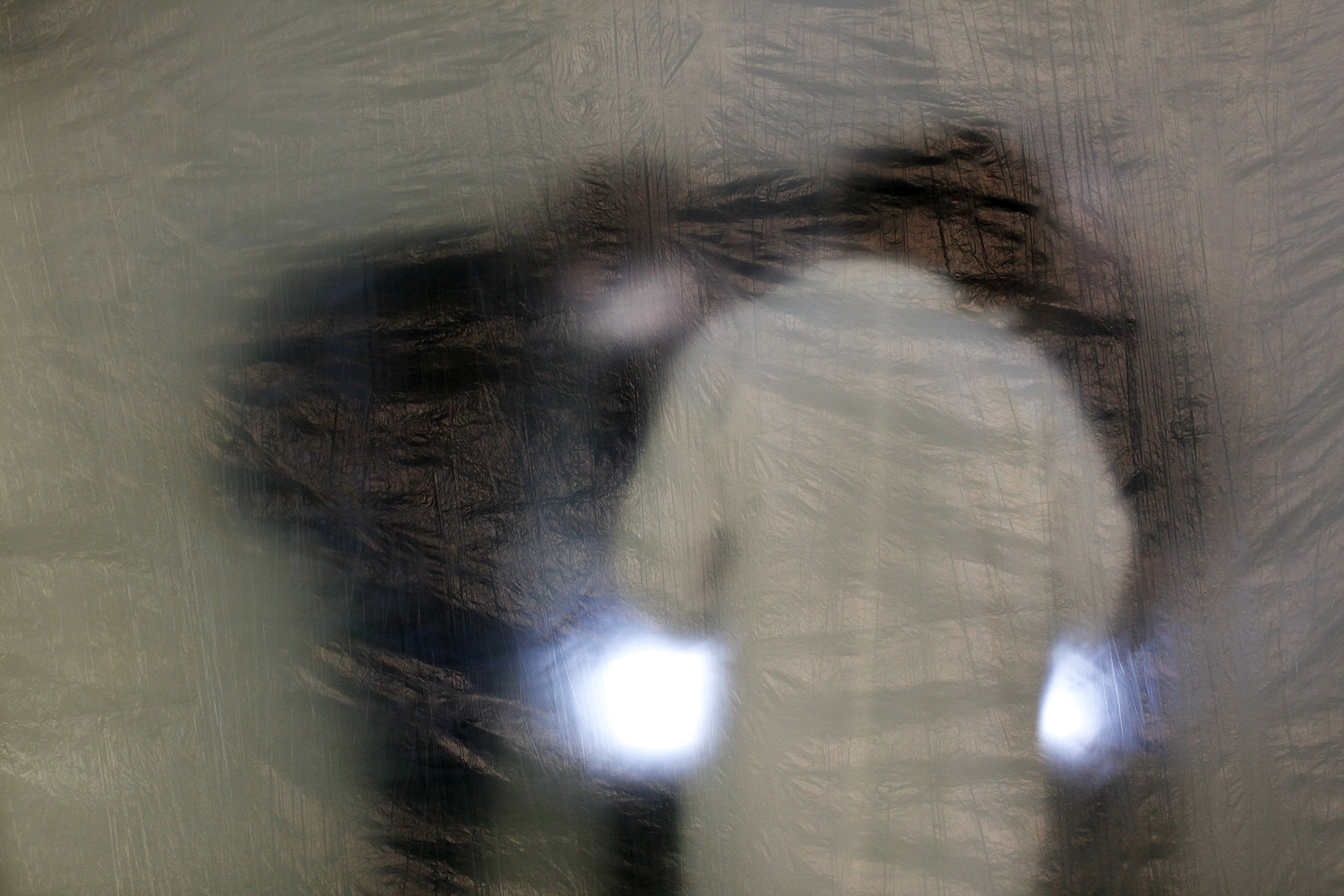
Result
By designing an interactive experience, our team established a space for participants to evaluate their own consumer behavior through a sequence of guided tasks. To collect immediate results, we produced a system for communicating an individual level of urgency to match each participant.
To support our message that overconsumption is an epidemic, we created an aesthetic that references temporary emergency facilities. All our design choices were guided by this principle.
The exhibition began in the waiting room, where participants filled out a survey to calculate a personal score out of 30 possible points. The resulting scores represented the severity of their personal consumption habits. In the examination room, each score corresponded with a numbered brain scan that presented participants with the consequence of their lifestyle choices. Upon reflection, participants entered the pharmacy. Customized prescriptions were given to suggest simple changes for reducing individual carbon footprints. Over the course of two exhibitions, our team collected 187 scores from a wide spectrum of demographics which included students, teachers, oil-rig workers, climate researchers, and more.
The survey was designed with a reference score of 12 to identify overconsumption in participants. This benchmark was created from the sum of answers to six different questions within three categories: Transport, diet and products. Of the 187 scores, the most common score was 13 out of 30.
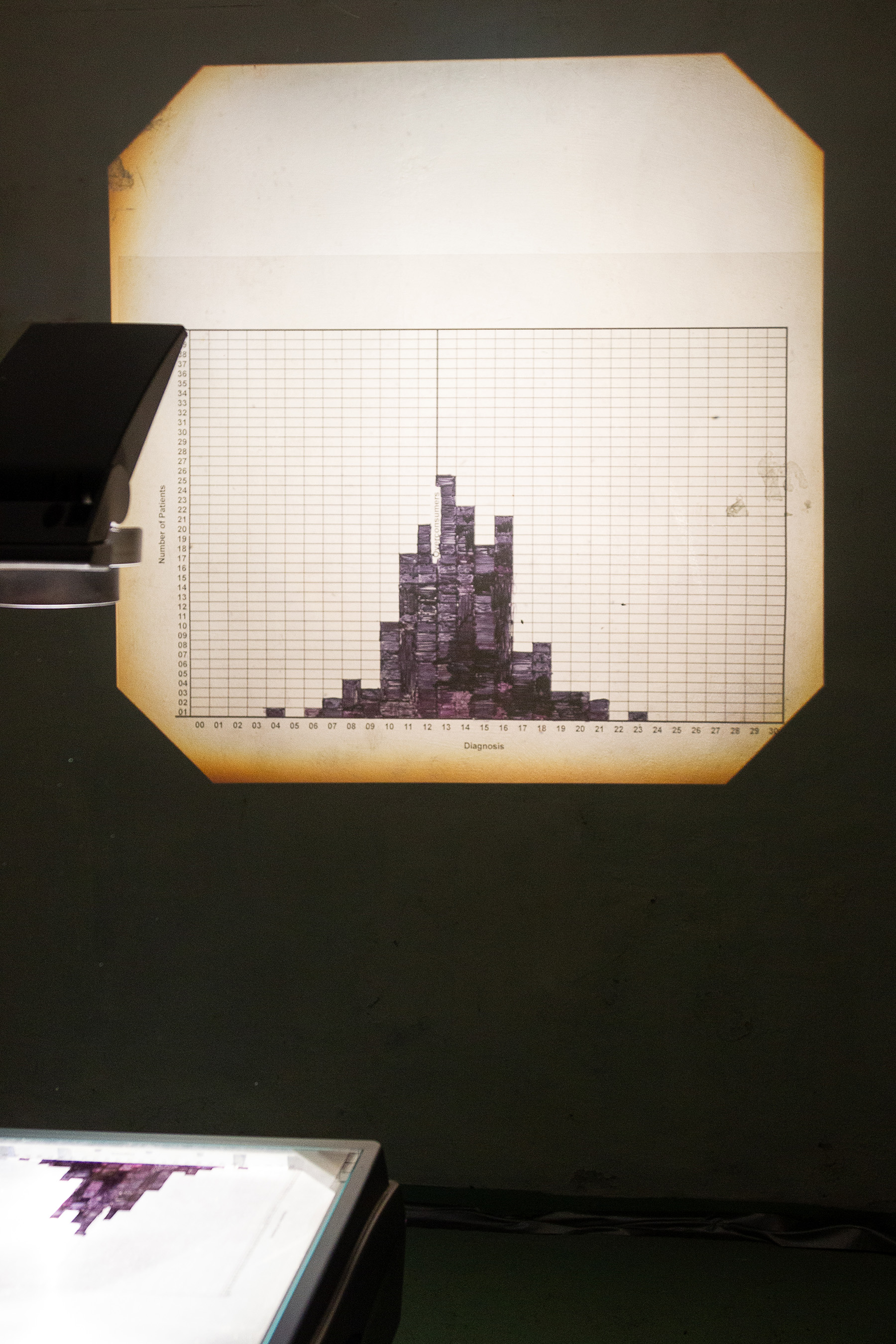
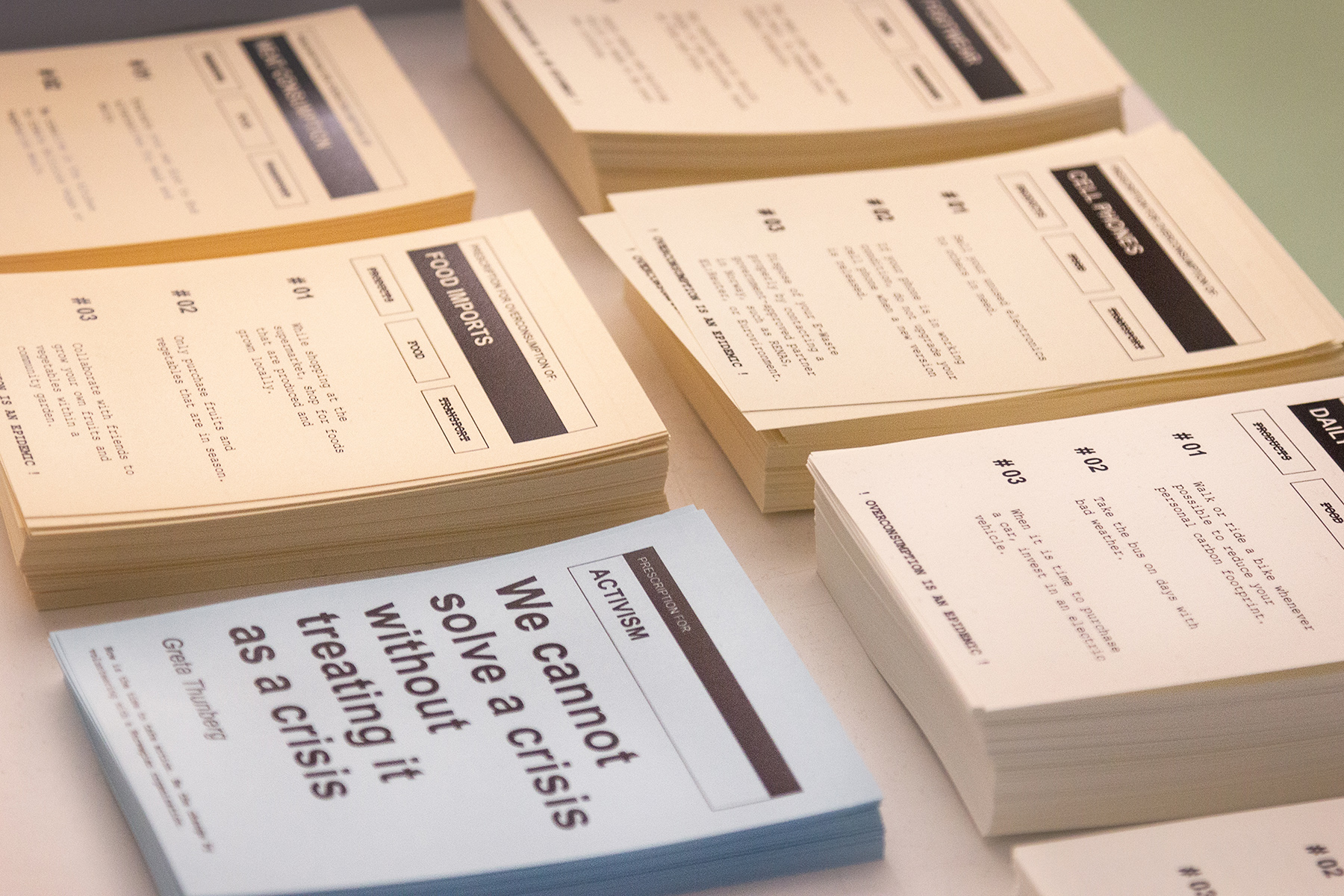
Effect
The Affluenza Center for Overconsumption aims to be an agent of change in the climate crisis through a process of examination and evaluation that results in an improvement on individual consumption behavior.
Our project’s values lay in the environmental and social contexts. Through a change in individual actions collective demands are constructed. We witnessed that the participants began to reflect upon their consumption behaviors as soon as they engaged in the experience. Afterwards, they stayed to discuss their results and felt inspired to change their consumption habits.
However, our focus on personal responsibility does not acquit governments and corporations from their obligations of implementing measures that will cease to be harmful to the environment. We simply approached the problem from the perspective of people being the main component of power structures. If there is a shift in consumer behavior, businesses and state policies will have to adapt.
The most valuable element this project has to offer is a change of mentality and attitude concerning how we, as a world society, chose to engage in consumption practices. This ideological and behavioral rehabilitation has the potential to lead us to a healthier planet, a better environment for other living beings and a less frightening tomorrow.
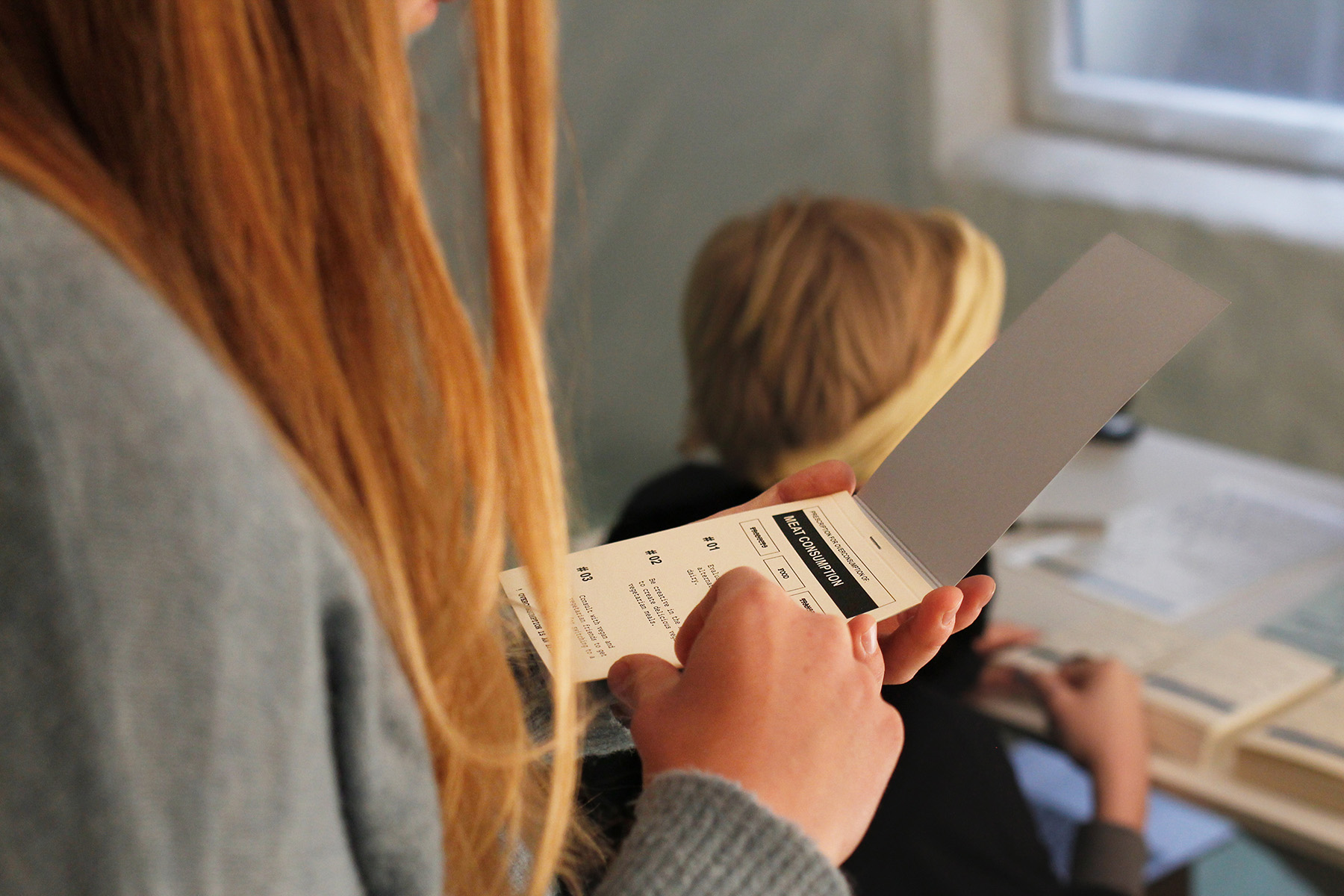
Further reading:
affluenza.myportfolio.com

